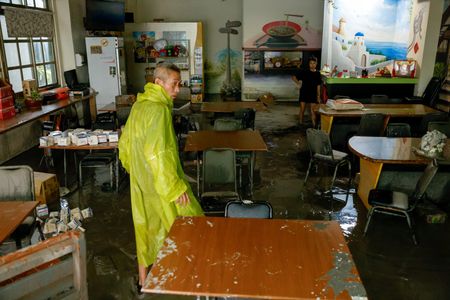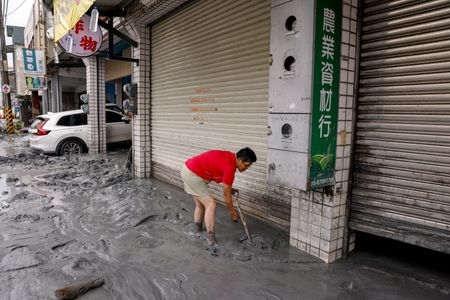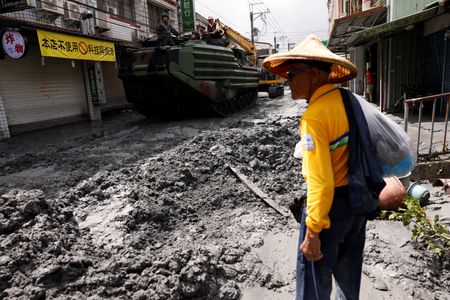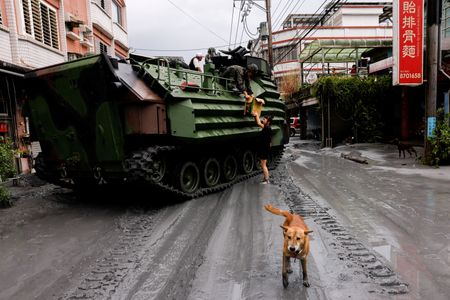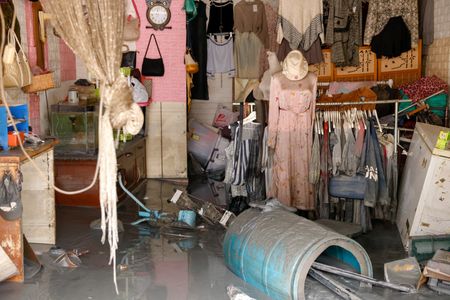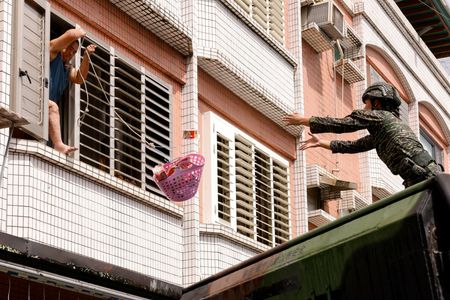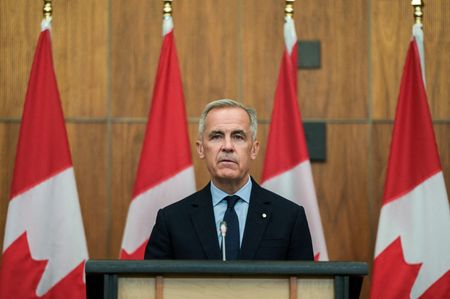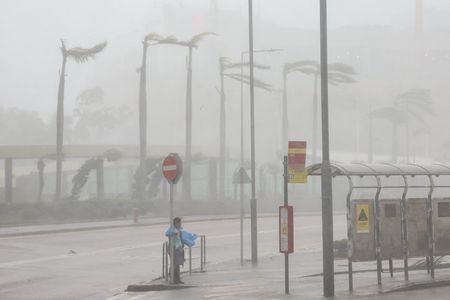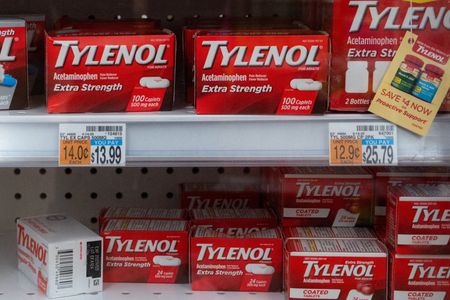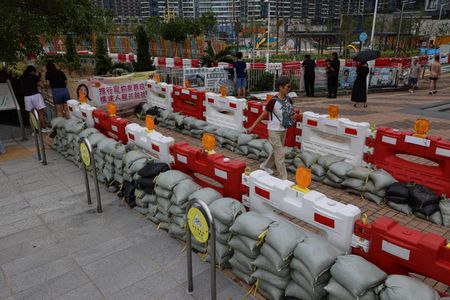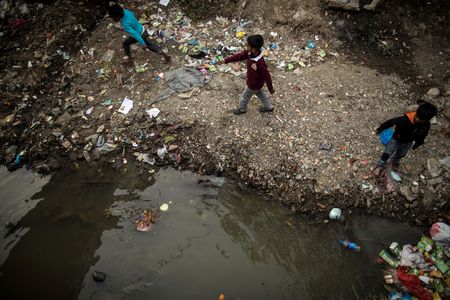By Yimou Lee
HUALIEN, Taiwan (Reuters) -Fourteen people have died in Taiwan’s popular tourist hub in the eastern county of Hualien, with 129 missing after a barrier lake in the mountains overflowed to deluge a town during a typhoon, the fire department said on Wednesday.
Taiwan has been lashed since Monday by the outer rim of Super Typhoon Ragasa, now hitting China’s southern coast and the Asian financial hub of Hong Kong.
The barrier lake, formed by landslides triggered by earlier heavy rain in the island’s sparsely populated east, burst its banks on Tuesday afternoon to send a wall of water into the township of Guangfu.
The water hit like a “tsunami”, said Guangfu postman Hsieh Chien-tung, though he was able to flee to the second floor of the post office just in time. Later, he got home to find his car had been swept into the living-room.
Fire officials said all the dead and missing were in Guangfu, where the waters swept away a major road bridge across a river.
Wang Tse-an said his entire village of Dama, home to about 1,000 people in the township, had been flooded and many were still stranded.
“It’s chaotic now,” Wang, the village chief, told Reuters, adding that the most important task was to get people to safety in shelters, while supplies could not get through.
“There are mud and rocks everywhere. Some flooding has subsided but some remains.”
Late morning Wednesday police car sirens sounded in Guangfu for a new flood warning, sending people scrambling to get to safer areas amid shouts from residents and rescuers of “the flood waters are coming, run fast”.
MILITARY ON THE SCENE
Regions across Taiwan have dispatched rescue teams to Hualien, with the military sending 340 troops to help.
In Guangfu, soldiers operating from an armoured personnel carrier to avoid the thick mud on the streets went door-to-door handing out water and instant noodles.
Resources were insufficient to help relocate those with disabilities, said Lamen Panay, a Hualien councillor, who added that government evacuation requests before the flood had not been mandatory.
“When warnings were issued, the central and local government said people could evacuate vertically, but what we were facing wasn’t something ‘vertical evacuation’ could resolve,” she said, referring to guidance for people to head to higher floors.
About 5,200 people, or about 60% of Guangfu’s population, sought shelter on the higher floors of their own homes while most of the rest left to stay with their families, government data showed.
The government estimated the barrier lake contained 91 million tonnes of water, enough to fill about 36,000 Olympic-sized swimming pools and the equivalent of a major reservoir in southern Taiwan.
The lake overflowed to release about 60 million tonnes of water, the government said.
China’s Taiwan Affairs Office offered condolence in a rare sign of goodwill from Beijing, which has a deep dislike of Taipei’s government.
China views Taiwan as its own territory, despite the strong objections of the island’s democratically-elected government.
Hualien’s wilderness beauty makes it one of Taiwan’s top tourist draws. It is also home to many members of the island’s indigenous groups, including the Amis.
The typhoon brought about 70 cm (28 inches) of rain to Taiwan’s east, though the populous west coast, home to the crucial semiconductor industry, was not affected.
In 2009, Typhoon Morakot cut a swathe of destruction through Taiwan’s south, killing about 700 and causing damage of up to $3 billion.
(Reporting by Yimou Lee; Writing by Ben Blanchard; Editing by Clarence Fernandez and Stephen Coates)

